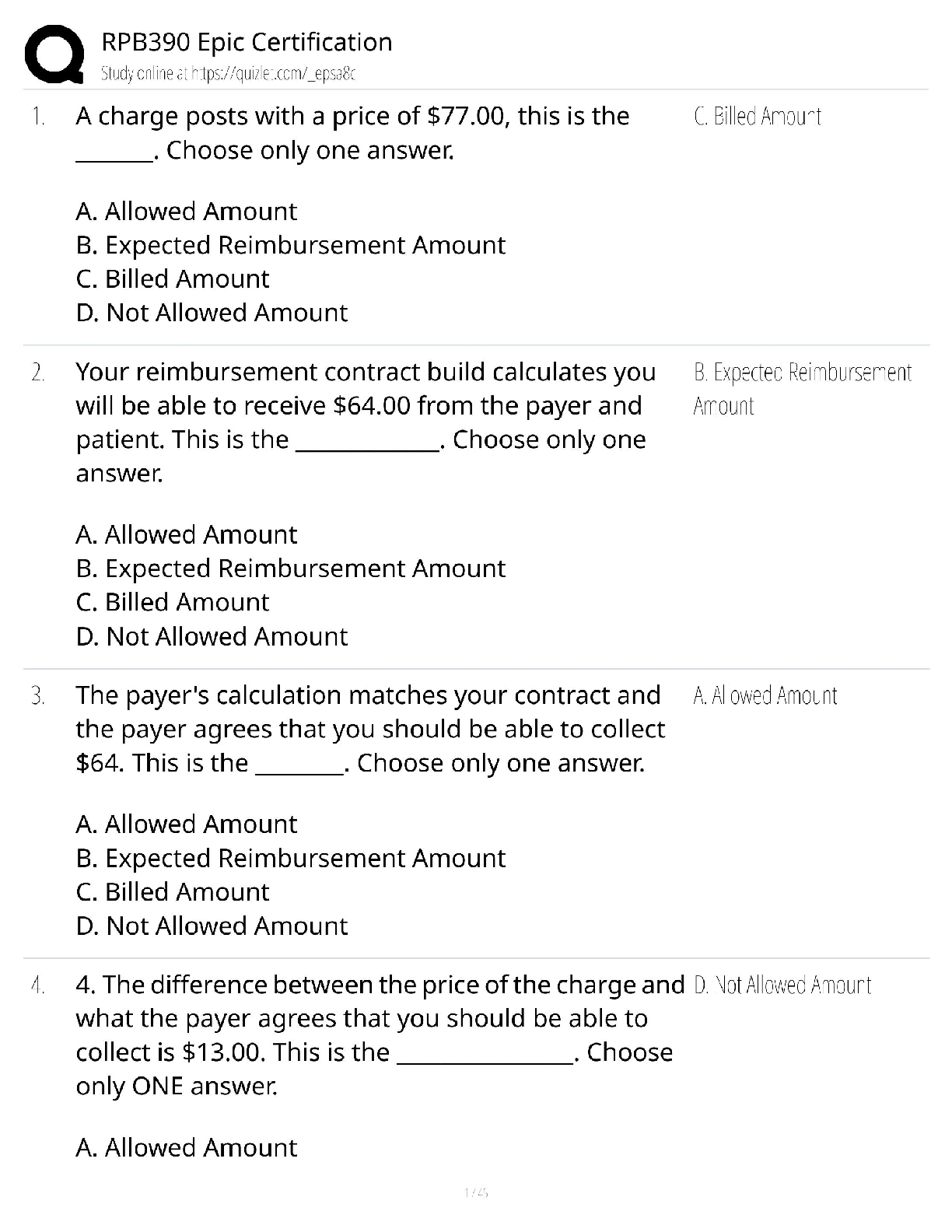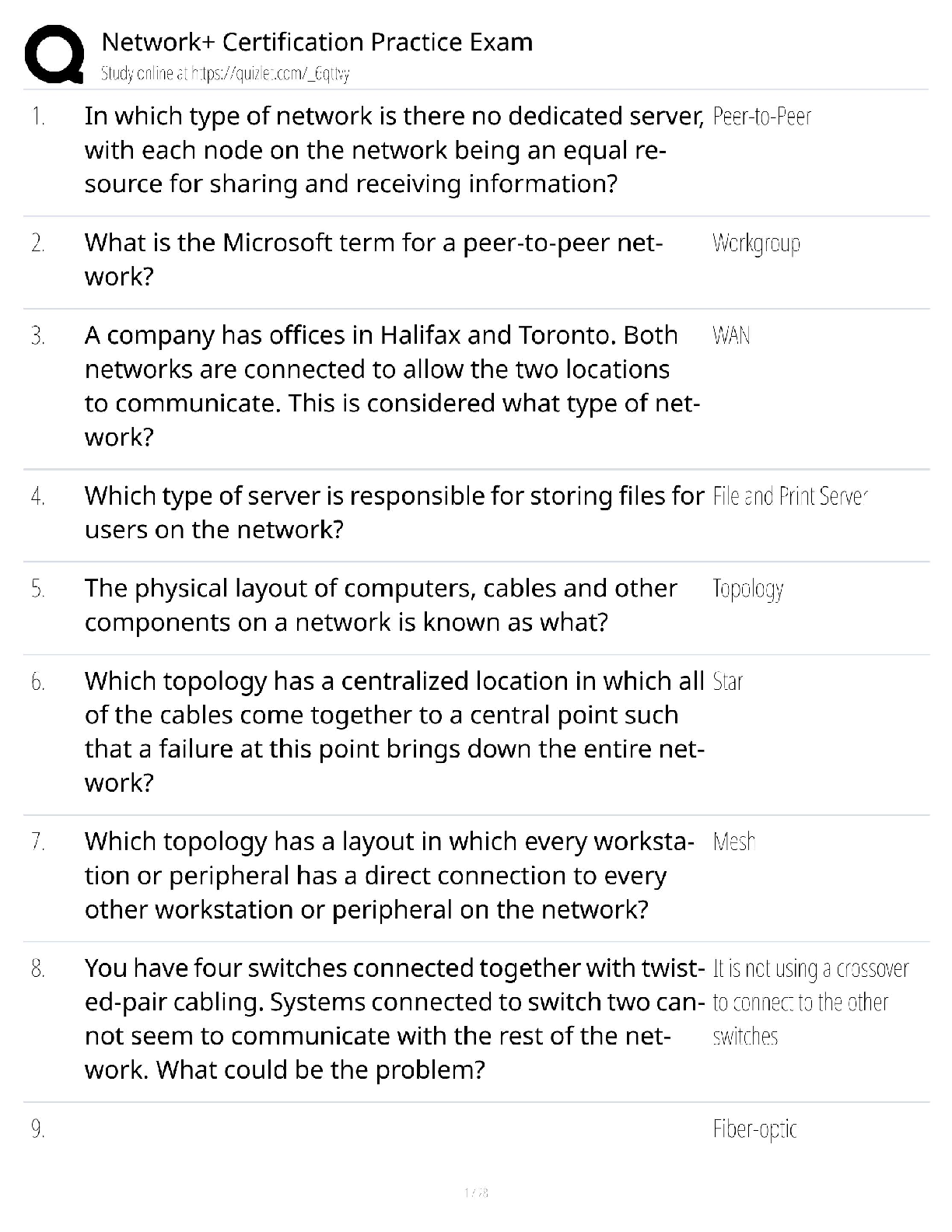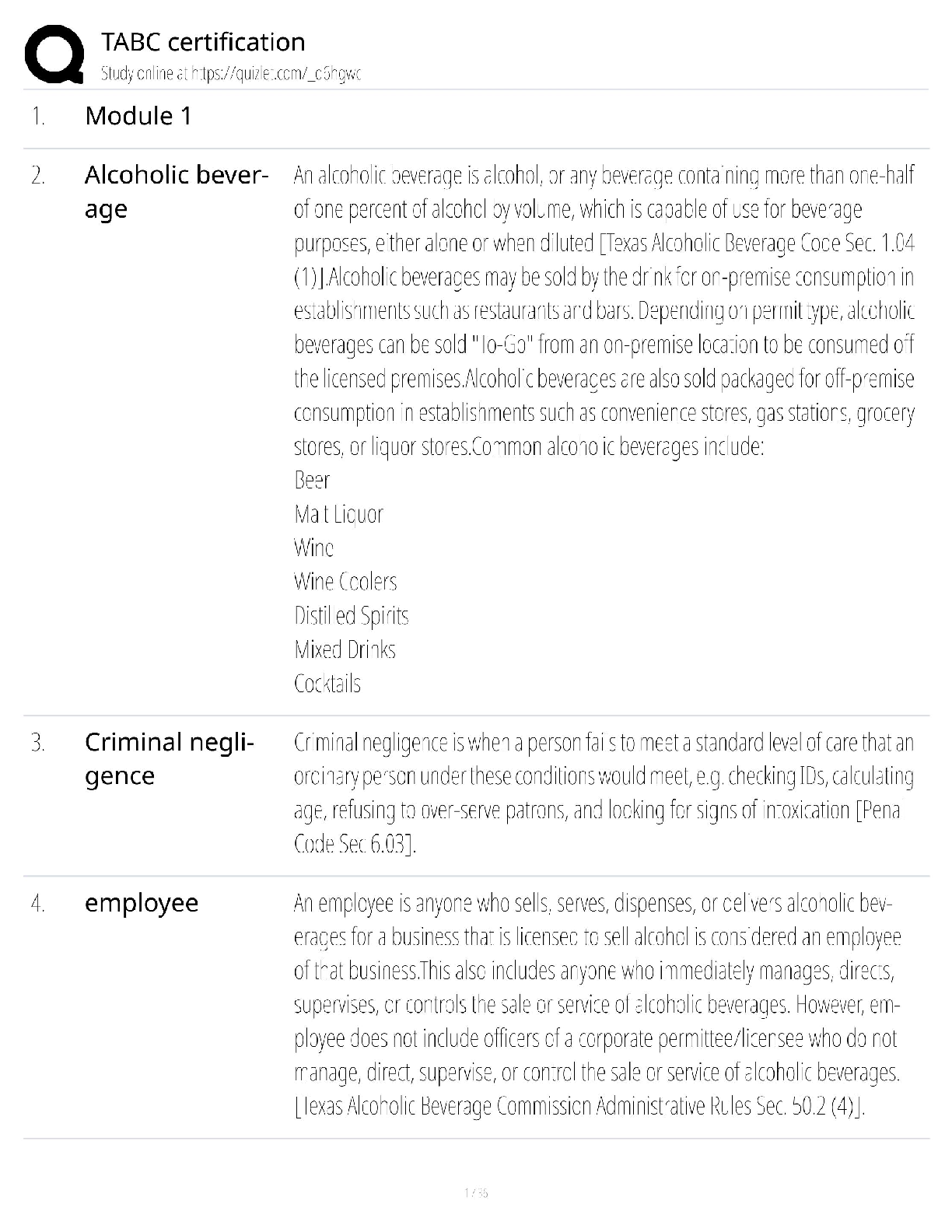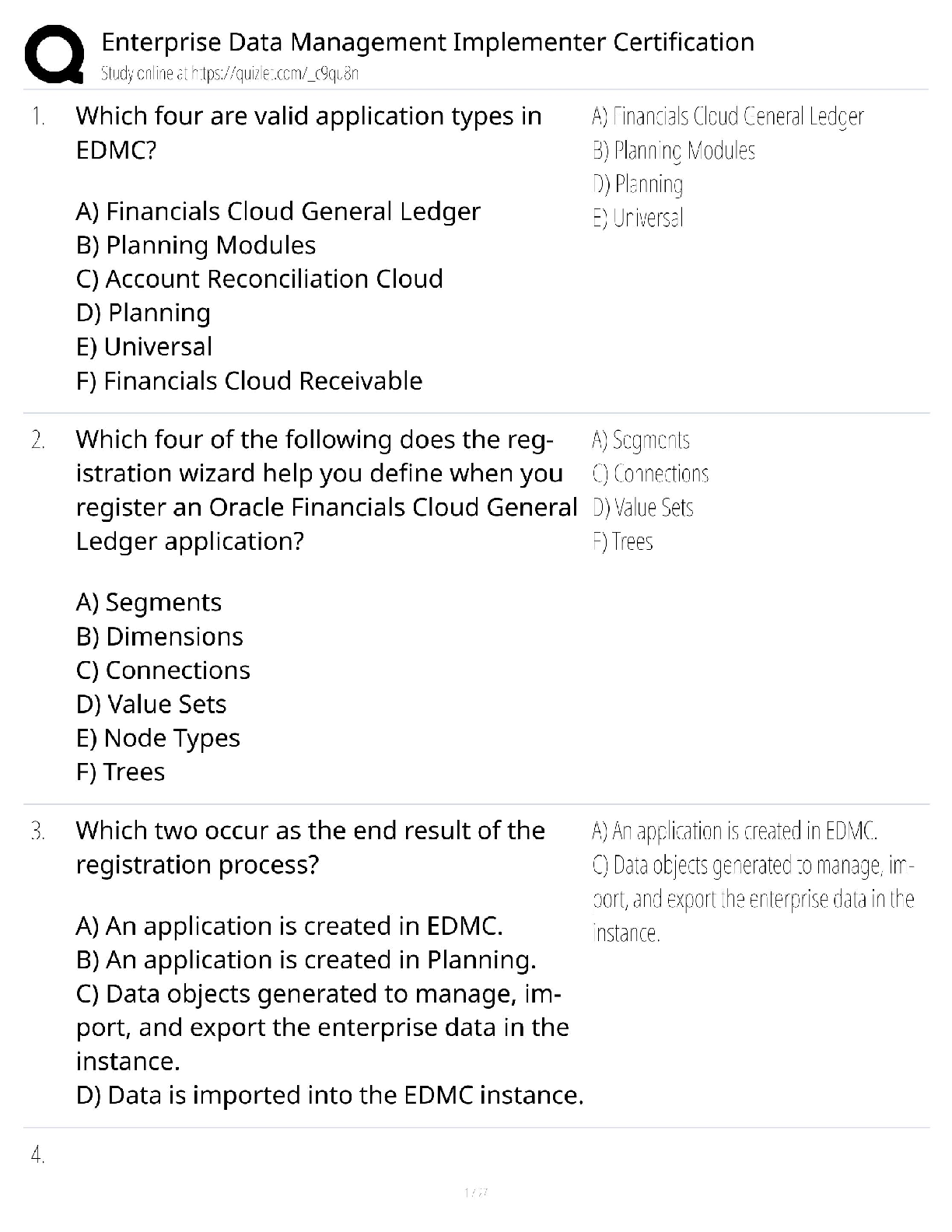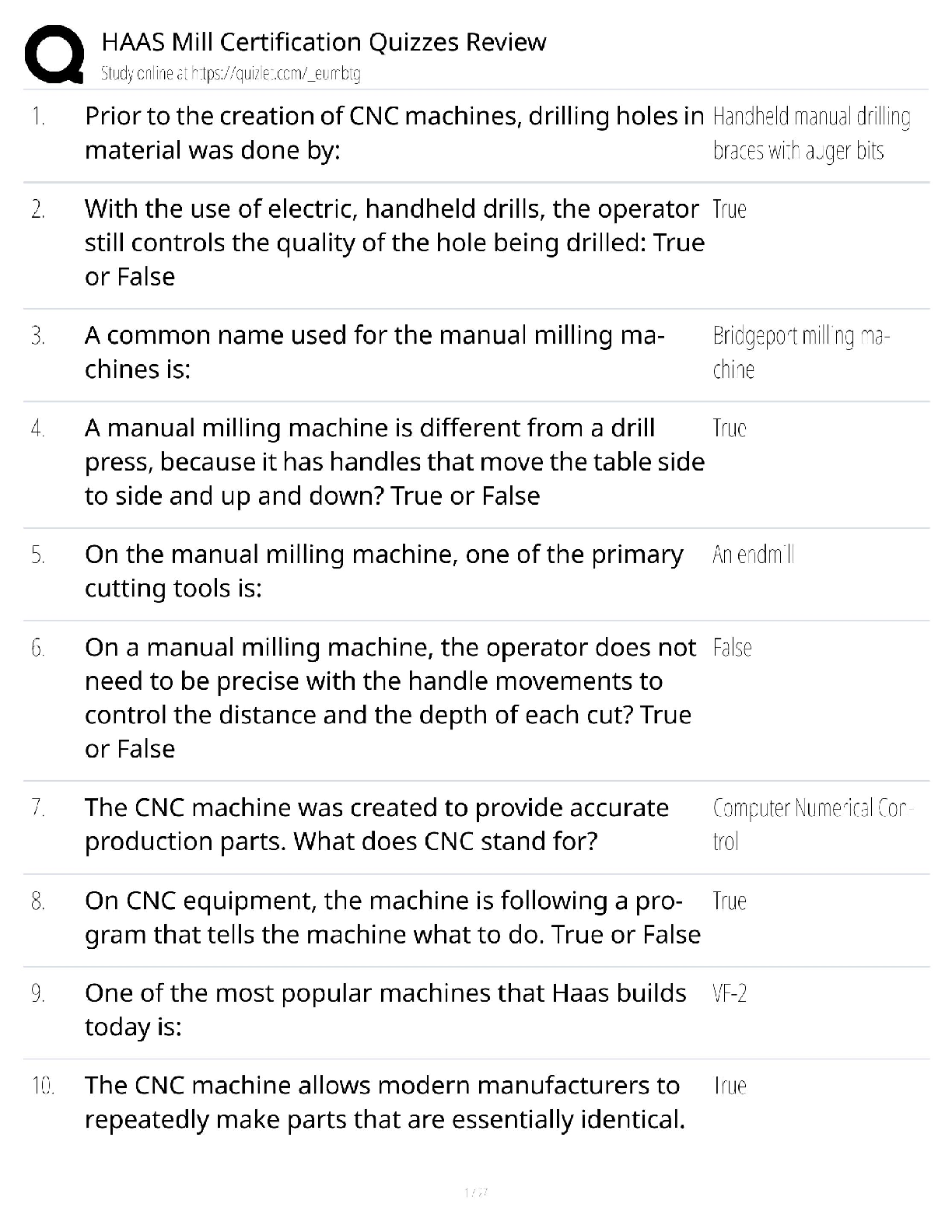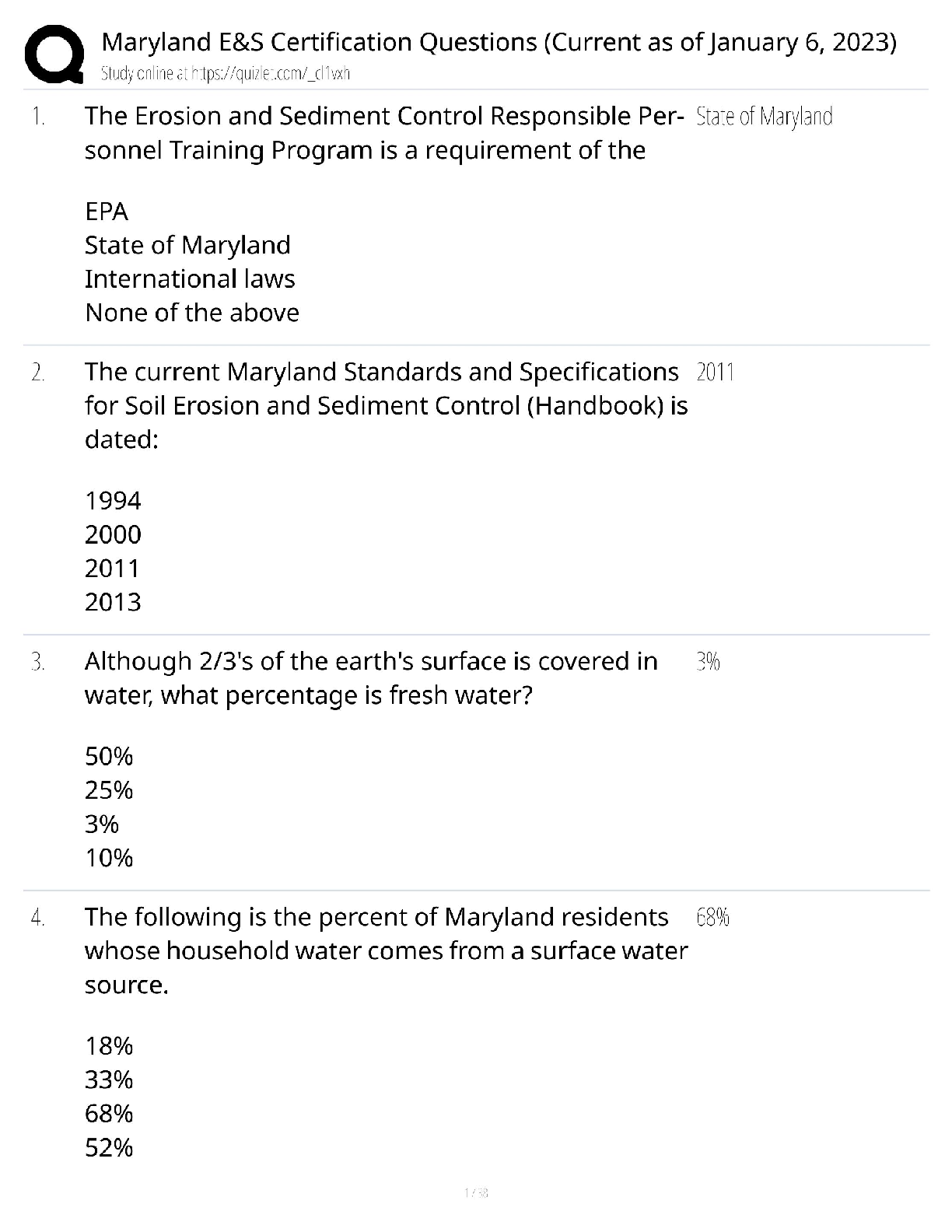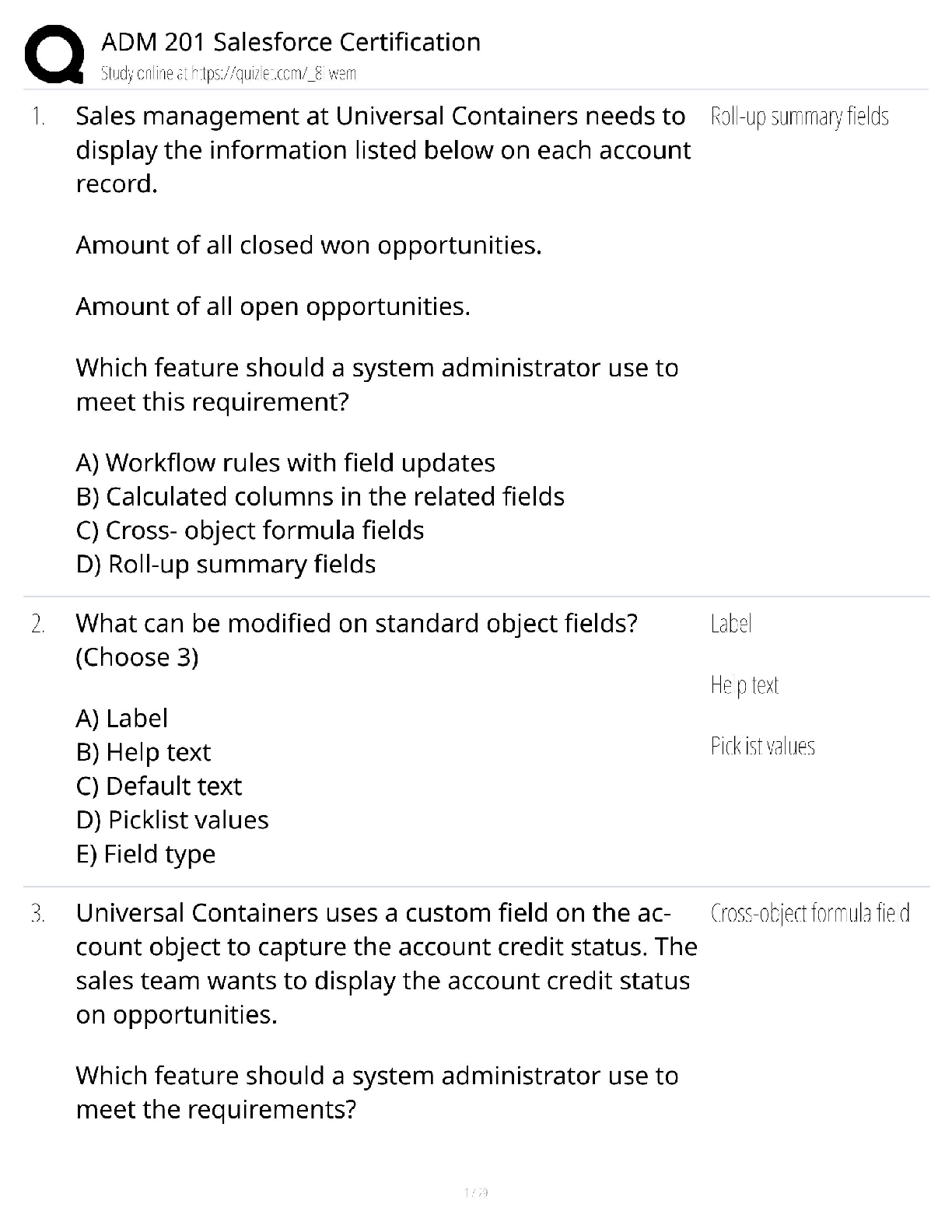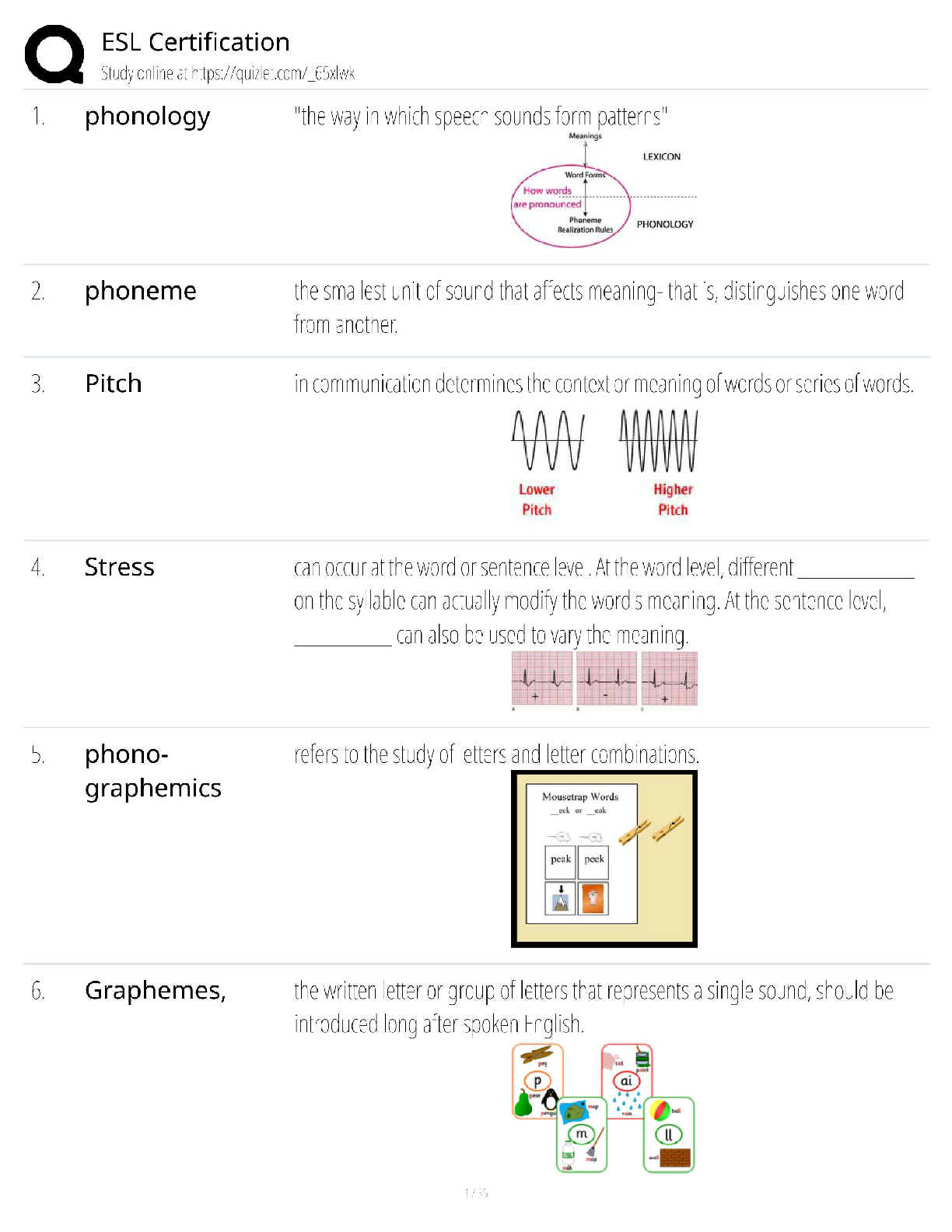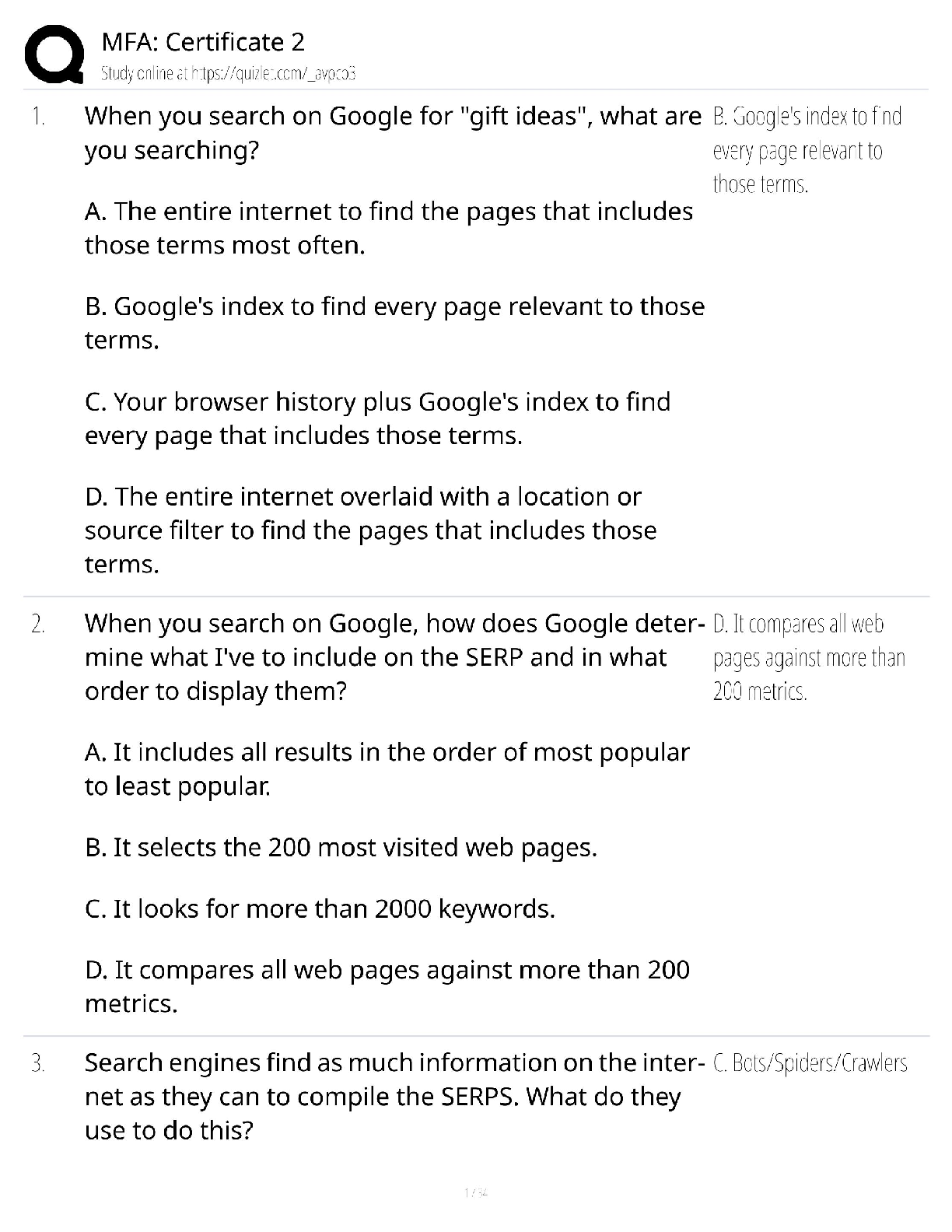*NURSING > QUESTIONS & ANSWERS > Chapter 08: Infection and Defects in Mechanisms of Defense Huether & McCance: Understanding Pathophy (All)
Chapter 08: Infection and Defects in Mechanisms of Defense Huether & McCance: Understanding Pathophysiology,
Document Content and Description Below
1. When a patient asks the nurse what hypersensitivity is, how should the nurse respond? Hypersensitivity is best defined as: a. a reduced immune response found in most pathologic states. b. a norm ... al immune response to an infectious agent. c. an excessive or inappropriate response of the immune system to a sensitizing antigen. d. antigenic desensitization. ANS: C Hypersensitivity is an altered immunologic response to an antigen that results in disease or damage to the individual. It is not a reduced immune response or a response to an infectious agent. Antigenic desensitization is performed to decrease hypersensitivity. REF: p. 199 2. When the maternal immune system becomes sensitized against antigens expressed by the fetus, what type of immune reaction occurs? a. Autoimmune b. Anaphylaxis c. Alloimmune d. Allergic ANS: C Alloimmunity can be observed during immunologic reactions against transfusions, transplanted tissue, or the fetus during pregnancy. Autoimmunity is a disturbance in the immunologic tolerance of self-antigens. The most rapid and severe immediate hypersensitivity reaction is anaphylaxis. An allergic response occurs related to exposure to an allergen. REF: p. 199 3. A patient presents with poison ivy on the extremities, face, and buttocks after an initial exposure 48 hours ago. This condition is an example of: a. anaphylaxis. b. serum sickness. c. delayed hypersensitivity. d. viral disease. ANS: C The response to poison ivy is a delayed hypersensitivity because it takes up to 72 hours to develop. Anaphylaxis is immediate. Serum sickness-type reactions are caused by the formation of immune complexes in the blood and their subsequent generalized deposition in target tissues. Poison ivy is not a viral disease. REF: p. 2014. A 10-year-old male is stung by a bee while playing in the yard. He begins itching and develops pain, swelling, redness, and respiratory difficulties. He is suffering from: a. immunodeficiency. b. autoimmunity. c. anaphylaxis. d. tissue-specific hypersensitivity. ANS: C Anaphylaxis occurs within minutes of reexposure to the antigen and can be either systemic (generalized) or cutaneous (localized). Immunodeficiency is a decrease in the immune response. Autoimmunity is a disturbance in the immunologic tolerance of self-antigens. Tissue-specific reaction is an autoimmune reaction. REF: p. 201 5. When a patient presents at the emergency department for an allergic reaction, the nurse recognizes the most severe consequence of a type I hypersensitivity reaction is: a. urticaria. b. hives. c. anaphylaxis. d. antibody-dependent cell-mediated cytotoxicity (ADCC). ANS: C The most rapid and severe immediate hypersensitivity type I reaction is anaphylaxis. Urticaria, or hives, is a dermal (skin) manifestation of allergic reactions. Hives and urticaria are similar responses. ADCC is a mechanism that involves natural killer (NK) cells. Antibodies on the target cell are recognized by Fc receptors on the NK cells, which release toxic substances that destroy the target cell. REF: p. 201 6. Which information would indicate more teaching is needed regarding hypersensitivity reactions? Type _______ hypers [Show More]
Last updated: 3 years ago
Preview 1 out of 10 pages

Buy this document to get the full access instantly
Instant Download Access after purchase
Buy NowInstant download
We Accept:

Also available in bundle (1)
Click Below to Access Bundle(s)
.png)
Huether & McCance: Understanding Pathophysiology, 6th Edition-all Chapters-QUESTIONS AND COMPREHENSIVE ANSAERS-ALL CORRECT
Huether & McCance: Understanding Pathophysiology, 6th Edition-all Chapters-QUESTIONS AND COMPREHENSIVE ANSAERS-ALL CORRECT
By d.occ 4 years ago
$49
23
Reviews( 0 )
$9.00
Can't find what you want? Try our AI powered Search
Document information
Connected school, study & course
About the document
Uploaded On
Jul 15, 2021
Number of pages
10
Written in
All
Additional information
This document has been written for:
Uploaded
Jul 15, 2021
Downloads
0
Views
113








.png)

.png)



